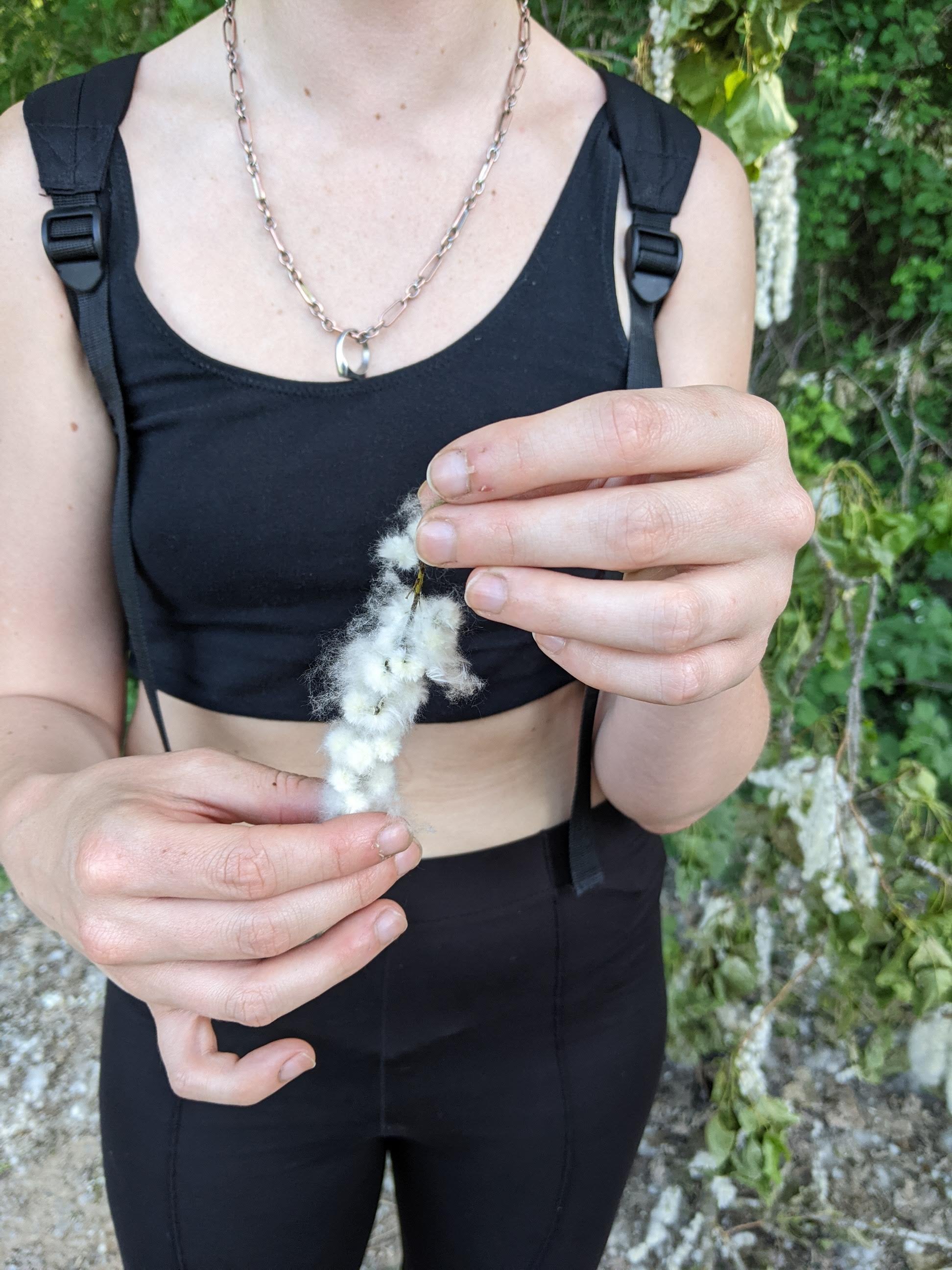Amber Cannings
Amber Cannings is a Welsh artist based in Berlin. She came to Cel del Nord after longing for Spain – her geographical muse – during the pandemic. It was a love affair that began after a year at the Universidad De Zaragoza in Teruel, where Cannings developed a style that explores the memory of spaces and places, portraying nostalgia and atmosphere through the use of paint.
She describes her paintings as ‘moments frozen in time, stable spaces that the viewer can walk through with their eyes.’ It was this element which she aimed to capture here in Oristà during an unseasonably hot residency in May 2022.
Amber Cannings sits in front of ‘Ding Dong All Day Long’. ‘Jardi d’una Dama’, oil on canvas, Amber Cannings 2022 is in full view on her right.
Both paintings were completed during her 2022 residency at Cel del Nord.
What is it about Spain that appeals to you as a subject matter?
Spain has been my favourite place to live so far. I’ve lived in Britain, Germany, and America, but there is just something extra special about Spain and I noticed it again during the residency. I don’t know if the government put something in the air, but the place oozes with a feeling of content. The languid afternoon siestas, dizzying heat, the beautiful stone streets and alleyways that invite you to explore.
In Spain, I feel I have the time to be creative, the way of life gives you time to pause and reflect, and allows you one of the basic human requirements, the need to dwell. The days are everlasting, and it takes you back to the natural rhythms of life. And it’s a place of outstanding beauty, it has it all from the gorgeous orange rocks of the mountains to the rolling hills dotted with small areas of human activity. All of this lit up in spectacular sunlight.
Above: Yellow room, oil on paper, Amber Cannings, 2022
Below: Exploring the local area
Above: A visit to the ceramics museum (museu de terrissa), Oristà
Below: Evening view of Amber Canning’s studio, Cel del Nord
You painted two very different scenes when you were here and both are quite unusual in the context of the village - what was it in those scenes that connected this place with your experience of being here?
Both pieces depict to varying degrees the natural and the geometric man-made structures. ‘Ding Dong all Day Long’ (Ding Dong) shows the outskirts of the village, where the village is eventually taken over by nature. ‘El Jardin d’una Dama’ (El Jardin) conveys the high capacity of structure present throughout the town.
Ding Dong cam about on a walk during the heatwave we experienced during the residency. I sat down on the road and I felt the heat, I felt the essence of the place. Even in real life, the scene appeared hazy, like a faded memory despite the fact it was in the present time. That is how Oristà feels to me, the town itself is like a small preservation of the past, where no one works on Sundays and the neighbours know what colour your knickers are and where you’ve been on your morning run.
El Jardin also ties into this. What drew me to it was how perfectly it had been tended, a sliver of the street brimming with organised information. This scene conveys the sense of relaxation and everlasting days in this Spanish town. The people here have the time to care for their gardens, and create their own oases. I also couldn’t resist including some of the sun-soaked stonework of a mid-afternoon, and some of the dramatic shadows present throughout the town.
Ding Dong All Day Long, oil on canvas, Amber Cannings 2022
When you leave somewhere after painting, do you think you take some of it with you for your future works?
How could I not? In the past I have left places, only to return to them a couple of years later through reference sketches and photographs as a way of reigniting these past memories. Nostalgia, places, and spaces are important themes within my work. Like many people, I have a fear of forgetting things and memories, pleasant times that get lost in the abyss that is life. So I often revisit past places and experiences as a method of preservation.
Then, when I am in a new place that excites and inspires me, these other places sit on the back-burner whilst I embrace my new place, exhausting and following the path of inspiration that it takes me on. I enjoy working firsthand, and being in a place allows me to do that.






